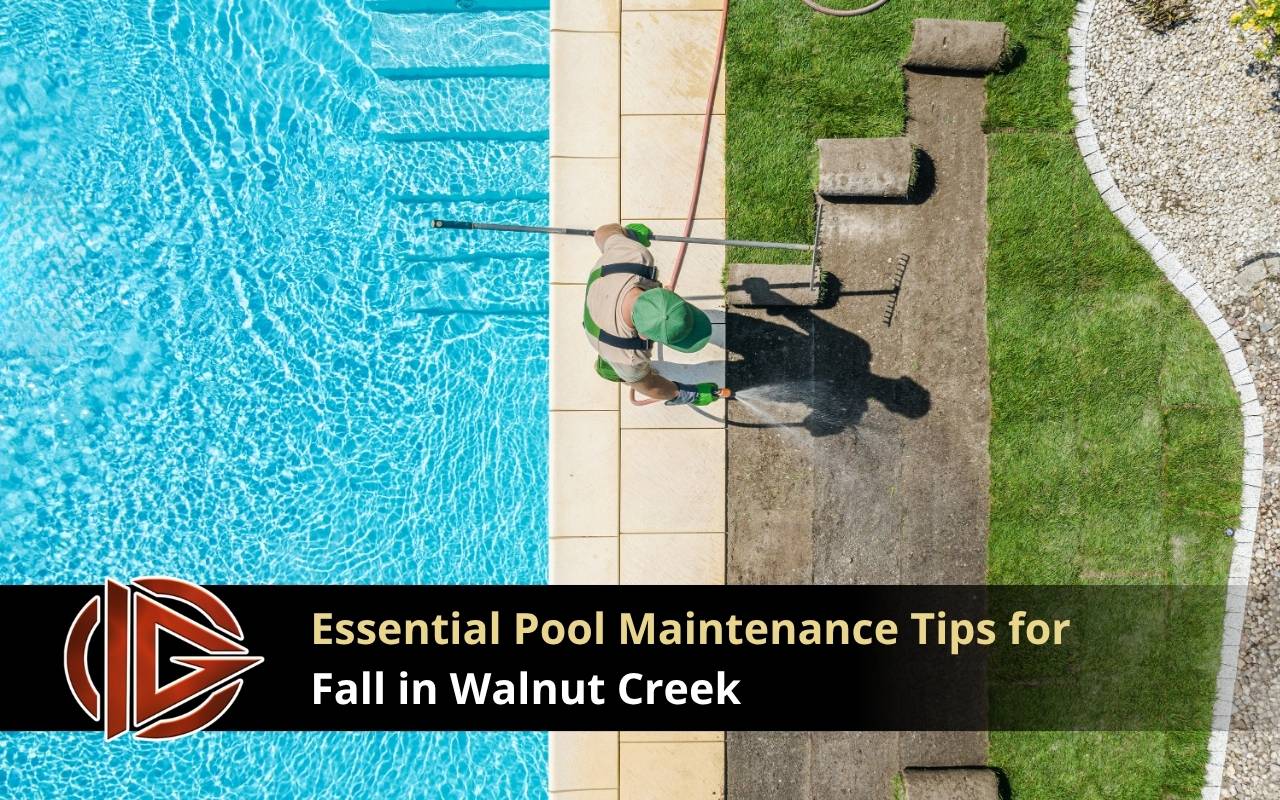
Dive into the crisp, colorful season of fall in Walnut Creek with a fresh perspective on pool care. As leaves begin to swirl and temperatures gradually drop, maintaining your backyard oasis becomes an essential yet often overlooked task. Neglecting your pool during the fall can lead to unwelcome surprises when spring arrives. That’s why mastering effective Fall Pool Maintenance Tips is crucial to ensure your pool remains in pristine condition, ready for those first warm days of the new year.
Recognize that while summer fun may have faded, your pool still requires attention. The cooler months bring unique challenges, including falling leaves, changing water chemistry, and fluctuating weather conditions. Adopting a proactive approach now can save you time, effort, and unnecessary expenses later. In this guide, we’ll walk you through simple yet effective strategies tailored for Walnut Creek’s specific climate, ensuring your pool stays clean and inviting, no matter the season.
Cleaning Fallen Leaves and Debris
One of the first tasks in your Fall Pool Maintenance Tips is clearing away leaves and debris. Walnut Creek trees drop a surprising amount of foliage, which can clog skimmers and strain your filtration system. Use a long-handled leaf skimmer daily to scoop out floating leaves before they sink and stain the pool surface.
- Run a leaf rake along the pool floor several times a week to collect fine debris.
- Use a durable leaf net or pool cover when not in use.
- Empty the net or cover regularly to prevent clogs.
Next, consider investing in a high-quality pool cover to catch most leaves while allowing water to drain through. Empty the net regularly to prevent clogs and to keep the water below free of debris. This step extends the life of your cover and reduces skimming time. Lastly, maintain the area around the pool by trimming trees and sweeping patios to prevent leaves from falling directly into the water.
Adjusting Water Chemistry for Fall
Cold weather and falling leaves can upset your pool’s water balance. Testing your water chemistry weekly is an important Fall Pool Maintenance Tip that prevents algae growth and ensures swimmer comfort. Use a home test kit to check pH, alkalinity, and chlorine levels.
- Keep pH between 7.2 and 7.6.
- Maintain total alkalinity between 80 and 120 ppm.
- Adjust calcium hardness between 200 and 400 ppm.
As temperatures drop, algae control becomes harder. Slightly raise chlorine levels using stabilized chlorine tablets for a slower release. Avoid over-chlorination—follow package directions and retest after 24 hours. Balanced water chemistry ensures a clean and safe environment all season long.
Protecting Pool Equipment from Autumn Weather
During fall, fluctuating temperatures can strain your pool’s pump, filter, and heater. Start by inspecting hoses and seals for cracks. Replace worn parts and use waterproof lubricant on O-rings. Keeping your system sealed prevents air leaks that can reduce efficiency.
- Wrap equipment in weather-resistant covers.
- Secure covers with bungee cords or straps.
- Store portable equipment indoors when possible.
Clean filters often during fall, as debris increases. Backwash sand filters when pressure rises 8–10 psi above normal. These Fall Pool Maintenance Tips help your equipment perform smoothly and prevent costly repairs during the colder months.
Checking and Maintaining Pool Covers
Before winter sets in, ensure your pool cover is in excellent condition. Inspect for rips or worn straps by spreading it fully over the pool. A sturdy cover prevents debris buildup and water accumulation. Replace broken springs and tighten anchors to maintain a secure fit.
If you use an automatic cover, clean the tracks and lubricate parts as recommended. For mesh covers, remove leaves and water weekly with a broom or pump. Keeping the cover clean extends its lifespan and protects your pool effectively.
Inspecting and Repairing Pool Tiles and Grout
Cracked or loose tiles allow water to seep into pool walls. Check for damage by walking around the deck and feeling for loose spots. Mark any problem areas before draining water. This inspection is one of the most overlooked Fall Pool Maintenance Tips.
Repair grout lines using a vinyl grout sealant designed for pools. Replace missing tiles with waterproof adhesive and follow curing directions carefully. For stains or buildup, use a mild acid wash solution safely. Consistent tile care prevents major repairs in spring.
Winterizing Pool Plumbing and Equipment
As temperatures approach freezing, winterize plumbing and equipment carefully. Shut off pumps, open all valves and drains, and blow out water from pipes with an air compressor. This prevents freezing damage and cracked lines. Plug return lines with rubber grommets to block air and pests.
Lower the water level below the skimmer and remove ladders or rails. Drain heaters and disconnect gas or electric connections. Cover fuel lines and secure covers to resist wind. These steps are core Fall Pool Maintenance Tips that help avoid expensive damage later.
Run your pump briefly to circulate non-toxic antifreeze, then shut down for the season. Lock away all equipment safely until spring.
Monitoring Water Levels and Filtration Systems
Maintaining the correct water level is another key Fall Pool Maintenance Tip. Too high a level strains walls; too low harms the pump. Check levels weekly and refill to mid-skimmer height. Avoid overfilling by using a shutoff nozzle.
Keep your filtration system running at least four hours daily. Even with cold water, debris can clog filters. Clean or backwash as needed, and watch pressure gauges closely. A clean system means a healthier pool and smoother spring opening.
Scheduling Professional Pool Maintenance Services
While many Fall Pool Maintenance Tips can be done yourself, hiring a professional before winter ensures nothing is missed. A certified technician can inspect equipment, balance chemicals, and prepare your pool for the cold season. Book your service in mid to late fall for best results.
Professionals can handle complex tasks like plumbing winterization and cover installation correctly. If you notice leaks or stains, scheduling a service call now can save you problems later. Consider checking out helpful resources such as pool maintenance guide to stay informed year-round. For more inspiration, explore pool construction ideas to plan your next pool project, or contact page to get expert assistance today.
FAQs about Fall Pool Maintenance
How often should I clean my pool during fall?
Clean your pool at least twice a week. Frequent cleaning prevents stains and reduces the load on your filter system.
Should I adjust chlorine levels in cooler months?
Yes. Slightly increase chlorine to control algae growth since lower temperatures slow its activity.
Do I need to run my pool pump daily in fall?
Absolutely. Running the pump at least four hours a day ensures water circulation and keeps debris from settling.
Can I leave my pool uncovered during fall?
It’s best to cover your pool. A sturdy cover reduces maintenance and protects against falling debris and algae growth.
When should I schedule professional maintenance?
Book professional services in mid or late fall to ensure your pool is ready before freezing temperatures arrive.
Ensuring a Smooth Transition into Winter
By following these Fall Pool Maintenance Tips, Walnut Creek pool owners can protect their investment and enjoy a stress-free spring. From cleaning debris and balancing water to winterizing equipment and hiring professionals, every step contributes to long-term pool health. Stay proactive and consistent this season to keep your pool ready for fun when warmer days return.




